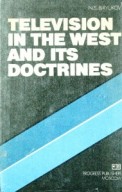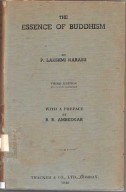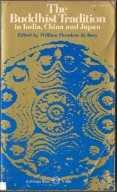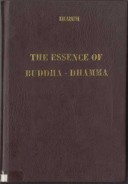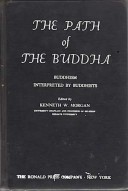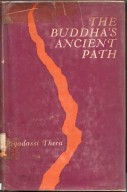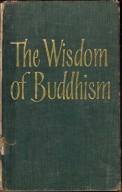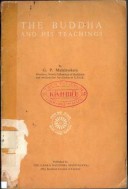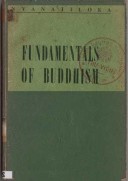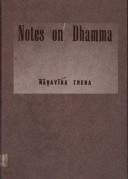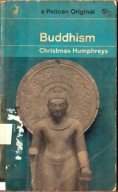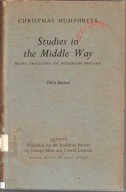Tìm Sách
Sách tiếng Anh-English >> Television In The West And Its Doctrines
Thông tin tra cứu
- Tên sách : Television In The West And Its Doctrines
- Tác giả : N. S. Biryukov
- Dịch giả :
- Ngôn ngữ : Anh
- Số trang : 203
- Nhà xuất bản : Profress Publishers Moscow
- Năm xuất bản : 1981
- Phân loại : Sách tiếng Anh-English
- MCB : 1210000005540
- OPAC :
- Tóm tắt :
MCB: 1210000005540
Translated from the Russian by Yuri Sviridov
Designed by Valery Kharlamov
CONTENTS
Introduction………………………………………………………. 4
Chapter One. A Short History of Television In Capitalist……………. 11
Chapter Two. Television & Other News Media………………………….. 19
Chapter Three. The Structure of Television In Capitalist Countries. 36
Chapter Four. Television & Monopoly Capital………………………….. 64
Chapter Five. Television & Ideology……………………………………….. 88
Chapter Six. Television As The Object Of Research…………………. 108
Chapter Seven. The Impartiality Doctrine In Bourgeois Television 133
Chapter Eight. The Doctrine Of “Mass Culture” & Television……. 153
Chapter Nine. “Free Flow Of Information” & Television’s International Relations.. 167
Conclusion…………………………………… 203
INTRODUCTION
Television is now a basic entry in the vocabulary of the latter half of the 20th century and very much a part of our daily lives. “Did you watch TV last night?”, “Come to see us tonight, there is something interesting on TV…” We often hear this from people of every age group and walk of life these days.
Television reports of such history-making international events as the Soviet-American joint space mission in 1975, the Soyuz-Apollo flight, or the 1976 Montreal Olympics were watched by an estimated 1.5 thousand million viewers around the world. What other medium can have literally half the world for its audience? These statistics alone, until fairly recently they would be in the fantastic class, compel great respect for and close attention to television.
Television is one of the mass media. It is both the scene and instrument of ideological warfare between the forces of progress and those of reaction in today’s world. It involves millions of people in ideological battles in all continents, making them all participants, albeit indirectly, in the great political debates of our time.
In 1980 people around the world are expected to own some 500 million TV sets. Whereas in the mid-1960s the developing countries had over 10 million TV sets, by now the total has grown vastly. In the industrialized capitalist countries 95 to 97 per cent of the population own TV sets and their number continues to grow. The big five of the capitalist world—the U.S.A.,-Japan, the F.R.G., Britain and France—have over 200 million TV receivers.
Some time ago the BBC staged an interesting experiment to find out just how addicted British viewers were to TV. About 200 families selected for the experiment were told that they would be paid five pounds a week if they gave up watching their telly. In the beginning the families must have been happy to have an extra five pounds added to their household budgets as welcome compensation for giving up TV viewing. However, as the experiment went on more and more families began to drop out of the race as they could no longer resist the temptation to look into that window on the world from time to time. Five months later the BBC had no one to pay the five pounds to, although the experiment had been expected to last for a year. The participants in the TV discussion which followed the experiment agreed that people deprived of their usual dose of TV suffered in much the same way drug addicts do when deprived of their daily portion of grass or needle.
Surveys conducted in many Western countries and Japan indicate that TV viewers spend several hours every day watching the silver screen. The NHK, the Japanese broadcasting corporation, conducted a survey which showed that on weekdays an average Japanese spends three hours five minutes and on Sundays three hours 46 minutes watching TV.
Surveys also indicate that in capitalist countries TV is the most effective shaper of public opinion. It has become a potent ideological weapon as it moulds opinions, tastes and people’s outlook on the world.
TV possesses several characteristics which distinguish it from other methods of transmitting information.
Firstly, it affects two senses simultaneously—hearing and sight. This sets it apart from the radio and the press. In The Communicators and Society David Wilson, BBC science correspondent for many years, writes that “television has therefore the potentiality of conveying far more information in a given time to any receiver than either of the two other media”.
Secondly, television can bring hot news to its audience with the speed of light. In this respect it can only be rivaled by radio, since both transmit information by means of electro-magnetic waves.
Thirdly, a TV broadcast needs no intermediary to reach its audience. The press needs postal services, a film needs a cinema, a play needs a theatre, etc., but like the radio TV brings its programmes right into the homes of its audience without any intermediaries. Both television and radio themselves may act as intermediaries during film shows (television), theatrical performances and concerts (television and radio) and some other programmes, but this is a separate issue.
Fourthly, television can cover simultaneously a giant audience, in some countries tar greater than that of radio or the press.
Fifthly, television is unrivaled for the direct and immediate impact on its audience as it can show the event in colour, in its development and at the moment that event occurs.
All this shows that television is not just another news medium but one which brings together many qualities of other media, transforming and synthesizing them.
It is a natural desire of people to see television as a true “mirror of life”, as a source of up-to-the-minute and objective information, as an instrument of bringing culture and art to the doorstep of one and all, as something one can turn to for advice, as a friend. However, Western politicians and ideologists look upon television not only as a major instrument of shaping public opinion in their own countries but as a most effective channel for external political propaganda. Imperialist countries seek to use television to influence foreign countries through what they call “direct TV broadcasting” (DTB).
What is television like in the advanced capitalist countries today, what do its programmes show the audience? What stages did it go through in its evolution? How does it interact with other mass media and what is its organizational structure? And the main question: How does it serve the ideological interests of the ruling class, the big bourgeoisie, and what are its doctrines and methods?
Until recently the most important works on world television have been those written by Walter B. Emery and Timothy Green of the U.S.A., James Halloran, a British expert on TV broadcasting, Herbert Marshall McLuhan, a Canadian sociologist, Jean Cazneuve and Enrique Melon-Martinez of France, and Takeo Furu, a Japanese expert on children’s television. These works present a broad picture of television and its development in the modern world. Among the works dealing with television in individual countries the author has used The Image Empire by Eric Barnouw, which deals comprehensively with television development in the U.S., The History of Broadcasting in the United Kingdom by Asa Briggs and The History of Broadcasting in Japan published by the Radio-TV Culture Research Institute in Tokyo and some others.
From the factological point of view special publications on modern television put out by international and national organizations are of considerable importance. Among these we have the annual World Radio-TV Handbook (Denmark), annual Television Factbook and Broadcasting Yearbook (U.S.A.) as well as yearbooks published by radio and TV organizations of other countries which contain data on programming, the structure, economics and history of TV and radio broadcasting and on sociological research associated. The most popular publications on television in the U.S.A. are TV Guide, Variety, Broadcasting, the quarterly Journal of Broadcasting and Television Quarterly. Four publications come out in Britain (Radio Times, TV Times, Campaign and Listener), three in France (Télé 7 jours, Télé-Poche and Télérama) and three in Switzerland (TV-Radio Zeitung, Revue de l’UER and Radio je vois tout). This author has also used weeklies published in the F.R.G. (TV Horen und Sehen), Belgium (Télé-moustique), Italy (Radiocorriere) and Japan (NHK Today and Tomorrow).
A good deal of critical and analytical material on Western television systematically appears in specialized weekly publications of socialist countries (Radio itelewizja—Poland, Tydenik Cs. Televise—Czechos lovakia, Femsehdienst and FF dabei—G.D.R., Radio- televizionen pereglad—Bulgaria, Radio-es Televisio-ujsag— Hungary).
Of great importance for systematizing and chronicling relevant material are the monthly of the International Radio and Television Organization (OIRT), Radio and Television, and Television and Radio Broadcasting published monthly in the U.S.S.R. The author has also drawn on a number of newspapers in various countries that run special columns on television.
Other useful material was contained in the memoirs of prominent Western TV personalities—Fred Friendly, David Brinkley, Léon Zitrone and others.
Let us look at National and International Systems of Broadcasting by Walter Emery, an authoritative work on world television which has gone through three editions in the U.S.A. It presents an overview of sound and TV broadcasting in the modern world.
Walter Emery is one of the veterans of U.S. broadcasting. Having joined in 1935 the U.S. Federal Communications Commission (FCC), Emery studied broadcasting in the U.S.A. and other countries. The result of his long effort is a book that has become something of a bible for most of the staff of broadcasting organizations in the West and for students of radio and television.
Emery has presented a basically faithful picture of the evolution of radio and television in most capitalist countries and showed the impact they are having on the population today. There is a large body of factual data of considerable practical value. However, in theoretical terms this study is rather naive.
The author often contradicts himself. Thus, describing the system of public education on television which was introduced following the passage of the 1967 Public Broadcasting Act Emery rightly regards it as the nucleus of a TV organization which the government would seek to influence directly. Emery even raced ahead of events when he wrote: “Thus even in the United States, which has a clearly predominant-commercial broadcasting system, there are a significant number of government a operated broadcasting stations.” It would seem that he would elaborate this subject further on, all the more so since there were ample facts and trends already in existence. But Emery evaded the subject. What is more, as if frightened by his own thoughts he said on the next page: ‘‘…There is general agreement that the government should not control programming.”
The Universal Eye by T. Green is structurally similar to Emery’s work but more substantiated in its approach. The author, a typical bourgeois liberal, denounces McCarthyism, racism, militaristic propaganda, the pursuit of profit by commercial television and the declining standards of broadcasting because of lowgrade advertising. Green’s book stands out among similar publications in the West as an interesting piece of research albeit weakened by the class-biased views of the author.
Green’s liberal stand and critical attitude to the U.S. monopoly circles are shared by Eric Barnouw, the author of The Image Empire. A professor of Columbia University Art School, Barnouw for many years headed the Cinema, Radio and Television Department at the school. The Image Empire traces the history of U.S. television from 1953 to 1970 and is an extension of Barnouw’s earlier books A Tower in Babel (a history of broadcasting up to 1933) and The Golden Web (1933-1953). In many ways a critical exposure, The Image Empire describes the television industry with its close connections with business and military interests, an industry which is a powerful instrument of influencing U.S. public opinion and a factor of ideological expansion abroad. Barnouw describes the methods of skillful and subtle interference used by the CIA and the Pentagon to influence TV coverage as a result of which the viewers are isolated both from the events covered and from world public opinion.
Bamouw shows the consequences of McCarthyism in the 1950s, and the tense situation it created in U.S. radio and television. He cites data on anti-communist publications which called for a crusade to crush progressive and liberal personalities of U.S. broadcasting. An atmosphere of baiting and prosecution for any sign of free thinking depressed the artistic level of TV programmes, standardized subjects and characters and stimulated the pursuit of profit at all costs with every means available. Barnouw, in particular, describes the scandal involving the revelation of the bribing of Charles Van Doren in the quizz “The $64,000 Question”.
The Image Empire is of a particular interest in that part of it which deals with the ideological expansion of U.S. imperialism through television. The book contains the story of creation of the anti-communist and anti-Soviet Voice of America and Radio Free Europe stations both of which were fathered by John Foster Dulles. Barnouw examines the export of American TV programmes in the context of the entire U.S. expansionist foreign policy. “The worldwide explosion seemed to Hollywood a show- business phenomenon, but it was more,” writes Barnouw. “To every nation, along with telefilms and their salesmen came advertising agencies—often branches of American agencies… And along with them came new advertisers— often companies affiliated with or owned by American companies. Television was merely the highly visible crest of a huge economic surge.” And not only economic, we should add, but primarily ideological.
Despite these positive elements, on the whole Barnouw’s book scientifically is a rather shallow study since its author, unable to disengage himself from bourgeois sociological concepts, cannot analyze the class essence of the evolution of u.s. television.
We should also mention La Television dans la famille et la société modemes by the French sociologist E. Melon- Martinez, which contains a large body of factual material on the impact of television on public opinion in France. The author also examines in detail the interaction between television and other mass media—the press, radio, theatre and cinema.
 Facebook
Facebook
 Google
Google
 Google+
Google+
